Rémy Chevrin, AFC, looks back on the shooting of Christophe Honoré’s "Winter Boy"
"Mourning through Rose-Colored Glasses", by François ReumontLucas is 17 years old when his adolescence is suddenly shattered. With the help of his brother, who has gone to live in Paris, and his mother, with whom he now lives alone, he will have to fight to learn to hope and love again.
You have been working with Christophe Honoré for over 20 years… how has your way of making films changed during that time?
Rémy Chevrin: Ever since 2015, Christophe Honoré has become less prolific in terms of preparation. He has drifted towards a more personal process, one that I’d call more intimate. His requests might therefore be limited to a few words, a few explicit instructions, rather than an exhaustive work on scouting, visual references, or influences as we might have done in the past. To me, it shows the trust he places in me. Now, we simply discuss colors and lighting ambiences to characterize each new project. For Winter Boy, which was inspired by his own adolescence, he immediately spoke of a winter film in the summertime. A story that takes place in the cold, on a mountain, where the faces would always be haloed by light with a counterpoint of softness given by pink. A bit the opposite of Sorry Angel, which was set in summertime in Paris, but had very cold and bluish ambiences that were characteristic of the wintertime. Bright, pink and mainly shot in close-ups, those were the three very simple directions given by him in preproduction and with which I built my own thinking and my work on the visuals of this film.


Is it still possible to encounter surprises together?
RC: For me, if there was a surprise, it came from the cast, and specifically the sudden certainty that this trio of starring actors worked brilliantly together in front of the camera. And the discovery of the talent of young Paul Kircher, whose presence and candor radiate in each shot. When Christophe Honoré discovered him during casting, he immediately stated that the character of Lucas suddenly came alive for him, and that moved the project forward. It was very emotional because the film discusses a very strong subject… mourning one’s father during adolescence. Perhaps it is also the most personal film Christophe has ever made. Given that I myself was also affected by the same loss in high school, I naturally felt extremely close to the subject and the situations as the film was being made.
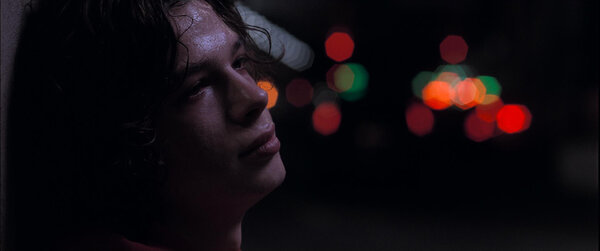
Speaking of new things in his films, this film is strongly anchored in the provinces and particularly in alpine landscapes. Where did this choice come from?
RC: I love shooting in the mountains. It was a pleasure for me to wake up every morning and go shoot a few establishing shots, playing with the sun that was appearing above the valley. You’ll notice, for example, that there are even a few timelapses in the film that establish the passage of time for Lucas. I think that deep down, this mountain catalyzed a shared desire with Christophe. A decision in total counterpoint with the reality of his childhood memories, in Brittany, in the Côtes d’Armor. I think he had consciously made the decision to break with that so that he could propose something different. The film had a very realistic, almost documentary feel, due to the choice of using a shoulder camera for around 90% of the shots. And paradoxically the 2.4 aspect ratio which is very associated with fiction and which we had never used together before...
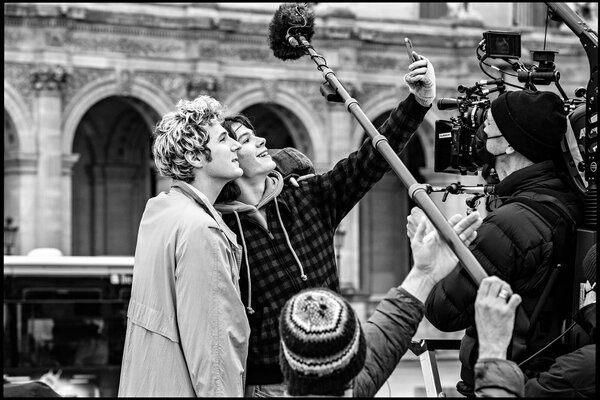
Or the desire for pink I mentioned. Another important point was the choice of the Haute-Maurienne which allowed us to anchor the history and trajectory of the protagonist in a territory where the clean break between the snow-covered village, the industrial valley, the motorway and the city naturally come through on the screen. Especially in the car scenes, which mark the script. This is a voyage, both concrete and mental, that Christophe was very attached to and which traverses the film from one end to the other.
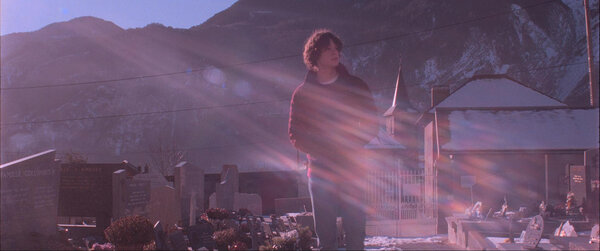
I also mentioned Christophe’s desire for the word “luminous” which he had repeated many times from the start of the project, and shooting in nice weather in winter suddenly provides real photographic opportunities. The very low sun that can be seen in the frame, working at full aperture even outdoors during the daytime, and a true softness in the accompanying natural light. This is exemplified by the cemetery sequence, shot at Saint-Jean-de-Maurienne, where we went for a very bright, cottony and light image. A choice that came across as an exact counterpoint to the absolute tragedy that this moment represents for the protagonists. The beginning of a certain rebirth and of a certain truth between the two boys.
What equipment did you choose to film this story?
RC: While Christophe wanted a light and bright film in its form, he also wanted lightness in the way the film would be shot. As is his custom, we shot the entire thing on film, with very few tools on set. We simply had the Arricam camera set to 3 perforation pulldown. That helped us economize on the amount of negative we had to use without taking too many risks of veiling on overly fine images (such as in 3 perforation pulldown when you film with skies in very bright lighting). A series of very compact and simple lenses (Zeiss T1.3 with octagonal aperture) and a period Angénieux 25-250 zoom lens for a few shots that were taken with very long focal length or occasionally intentional zoom effects. With 4-5 minutes of autonomy on 120-meter magazines, we were able to remain very reactive and mobile with the camera on the shoulder...
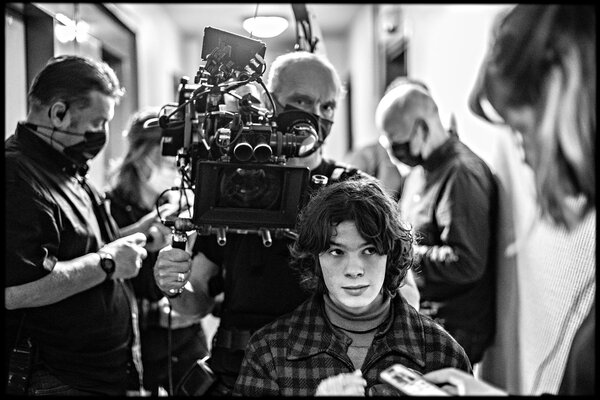
We allowed the shots to live for the actors, as Christophe always shoots with a single camera, with only two focal lengths (35 and 85 mm) and regularly dispenses with the rule of 180° in the way he covers scenes. The only norm on this film was that every scene should be potentially covered with two angles and that we should prioritize close-ups on faces. At the end, very little film was used (45,000 meters for a 2-hour-long film) and at the same time we were able to fulfill our desire of feeling free with the time and silences. Like the scene where Juliette Binoche, Vincent Lacoste and Paul Kircher are choosing the music that will be played during the funeral. The time they spend looking at each other in silence before breaking into dance together was very moving to me from behind the camera. It is this type of suspended moment that is part of the intimate strength of this film.
The film adopts a particular form of storytelling that tends to blur the passage of time.
RC: The first time I read the screenplay, I remember that I was unsettled by the flashbacks. This feeling was later confirmed by Christophe himself, when he explained that his intention was to present Lucas’ story first and foremost. A story that is overcome by adolescence, mourning and the confusion about who he is and where he is going. There is constant play with time and space that gives the film an almost-unreal dimension. For example, when you emerge from the flashbacks and are in the car. Or the way that the film was anchored in reality by choosing to have the actors wear masks in certain scenes (the shooting took place in the middle of the pandemic). He was very attached to this decision which, in the end, gave the narration a very particular touch. We could also discuss the shots facing the camera, black backgrounds that deconstruct space and time and place the film in its own space.

Was the pink a challenge for you?
RC: The choice of the color pink to accompany this boy’s mourning process was made in a very deliberate way by Christophe. And yet, I didn’t want to find myself with hyper-saturated magenta faces and so I had to dose it in a subtle way. If you put aside the few love scenes, which really play up the pink card, and which don’t really represent a problem because of the effect itself, most of the other scenes rely on a balance between the set lighting and the effects that were mainly distilled by multichannel LED spots. In the night scene in the bar on the square, for example, we can see a real ambience but one that has been slightly altered. In this type of scene, we allowed ourselves to be carried by the location itself, and then we constructed the visuals by eliminating first what we did not want. That is one of the main paradoxes of the work of a cinematographer on a film: we often turn off more lights than we actually light a given shot!
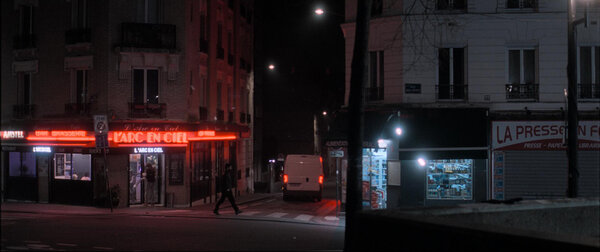
Christophe’s films are no exception to the rule. Of course, our decision to shoot on film at 320 ISO did somewhat shake up our habits, compared to the 2,500 ISO of the latest digital cameras, but the method is valuable each time, as only the power of the few added sources must be chosen in consequence.

On the bar scene you’re mentioning, the view on the city is very blue, and very much a break with modern urban lighting.
RC: Yes, the street lighting was turned off, because Christophe and I really don’t much care for sodium lighting, as we find it too monochromatic. That’s why I often replace the bulbs in the streetlamps, or I light the windows with my own sources. There was no question of hiding the city, or making a mannered version of it, but just proposing a slightly different version from reality with a particular anchoring. Allowing the real to come through but making it a little unreal.
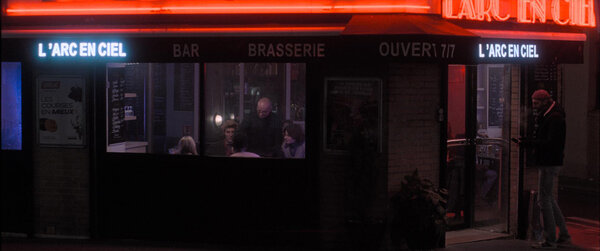
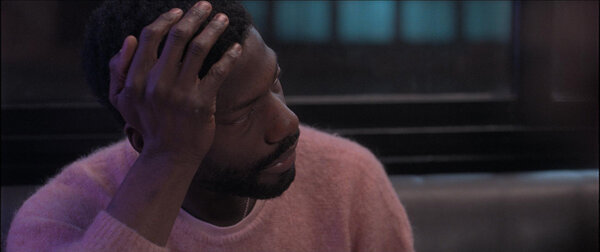
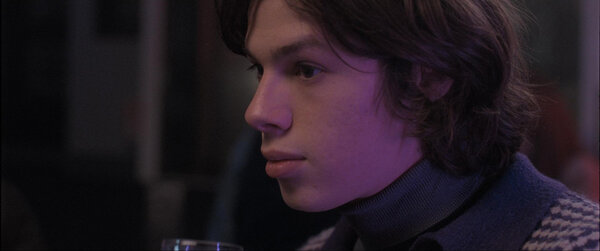
What lighting did you work with on the scene in the bar location where Lucas meets Lilio?
RC: Mainly a lot of Aladdin 30x60s, so that I could have more aperture. These are very small, lightweight and practical sources. From that point of view, the ease of adjusting colors really transformed our profession. The only constraint is that only soft sources were available, and we couldn’t until recently design lighting with more contrast based on Fresnel LED equivalents. It seems to me that this is now changing, and Fresnel LEDs are going to become more widely available with the same colorimetric flexibility. As for the color rendering on this film made up of faces, I will say that the colorimetric space of Kodak film is such that it makes things so much easier with LED sources compared to the digital equivalent. In any case, I remain very doubtful about the criticisms regarding rendering from LED sources. The quality in the past 5 years has come so far from what we could ever have imagined in the 1990s with the color deviations of HMI lights that we used to spend our time correcting with green or magenta gels! The power of adjustment on the latest-generation LED lights is such that we can modify any deviation in a few seconds, or refine a given effect.
A word about color timing?
RC: As concerns the workflow on this film, Hiventy photochemical labs and M141 put into place a very simple process, with a 2K transfer on a Scanity scanner, and color timing on Baselight. Marjolaine Mispelaere handled the color timing process with a great deal of professionalism and without any real difficulty. The film was already edited barely a month after shooting had ended and was finalized a few weeks later in spring 2022. I also want to recognize the remarkable work of Agnès Letessier, my first assistant camera, who often had to focus the camera at full aperture, on film, and sometimes without any rehearsals. When this involved filming a number of close ups at 85 mm with the camera on the shoulder, I can say that I take my hat off to her.
(Interview conducted by François Reumont, for the AFC, and translated from French by A. Baron Raiffe)
 En
En
 Fr
Fr








